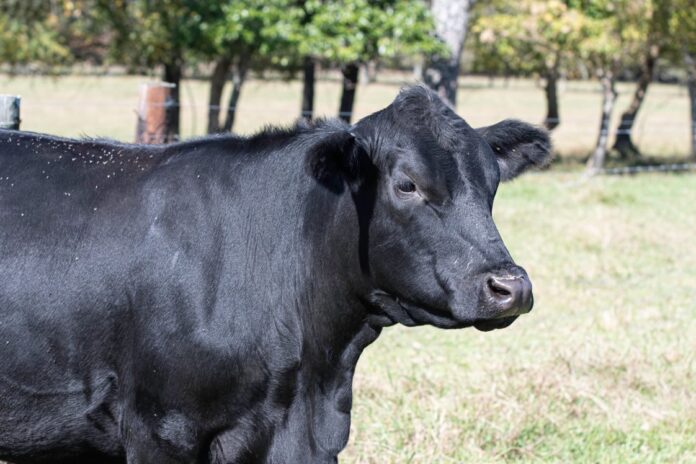AUBURN UNIVERSITY, Ala. – Horn flies can become a major issue for cattle during the summer. Commonly used fly control methods include sprays, drenches and dusts. However, a recent trend within the livestock industry is the search for alternative fly control methods. Among the methods gaining national attention is the use of garlic, cinnamon and other essential oil-based extracts in livestock feeds or minerals. The thought behind feeding livestock these aromatics is that their strong scents will deter flies. However, are these fragrant control methods effective, or are they all show? Alabama Cooperative Extension System experts are here to help unravel this aromatic mystery.
Limited research available
Kim Mullenix, an Alabama Extension beef systems specialist, said while these alternative fly control additives are of popular interest, research on their effectiveness is relatively limited.
“Most of the available research on supplementing garlic as a fly control method was done in dairy cattle diets,” Mullenix said. “While some reduction in fly numbers was observed, this is because garlic was supplemented in larger quantities in their daily total mixed ration than what producers can provide through a mineral supplement.”
Dave Boxler and T.L. Meyer, both educators with Nebraska Extension, recently published information about their research with using garlic as a means of horn fly control. In their two studies, they used garlic mixed with minerals and salt and offered it to the cattle free choice. To gage effectiveness, the researchers used a control group of untreated cattle. According to their findings, horn fly numbers on cattle in both studies exceeded the economic threshold of 200 flies. An economic threshold is when there are enough flies present that the economic loss is equal to the producer’s management costs. In one of the studies, a rescue treatment had to be performed to reduce the number or horn flies. Read more about Nebraska Extension’s research at beef.unl.edu.
Proven alternative control methods
While the effectiveness of garlic and other scent-powered control methods is not fully known, there are some alternative fly control methods that producers can implement in their operations. Mullenix said there are many mineral supplements that include additives for management items such as fly control.
“Producers may consider using components of their nutrition program as carriers for feed-through fly control methods,” Mullenix said. “Some of the most common fly control additives in minerals include S-methoprene. This passes through the digestive tract of the animal and prevents the development of fly eggs in manure, which is where flies most often lay their eggs.”
Because this control method involves the reproductive cycle of flies, Mullenix said these mineral products containing S-methoprene need to be available to cattle before the onset of flies for the season occurs.
Traditional control methods
While proven alternative methods do have their place and time for use, they generally cannot be solely depended upon for proper fly control. To achieve full-level control, producers should use multiple product types and modes of action.
Kelly Palmer, an Alabama Extension animal science and forages regional agent, said there are several products labeled for horn fly control that come in a variety of delivery methods.
“These control methods include sprays, drenches, dusts, ear tags and feed throughs,” Palmer said. “No matter what method a producer chooses, they must do something so these flies don’t bite off too much of their profits.”
For the more traditional control options–such as sprays, drenches and dusts–Palmer said these will only provide temporary relief to cattle. Producers must make multiple applications throughout the season to effectively control flies.
While not as traditional as some methods, the use of fly ear tags has become widely popular. However, Palmer said producers need to use them correctly to achieve the desired level of control.
“Wait to apply tags until the herd has reached 200 flies per animal,” Palmer said. “Applying tags too early will decrease their effectiveness during the peak of horn-fly season. Also, be sure to follow the label rates, remove the tags at the end of the season or when they stop being effective and rotate between classes of insecticide. Not following these steps can increase resistance in the horn fly population.”
Involve the neighbors
Just like raising a child, properly controlling horn flies in cattle takes a village. It is important that beef producers talk with other producers at neighboring farms about what fly control strategies they use.
“If you are being proactive in terms of fly control but your neighbor doesn’t use any fly control, this may not help the situation on your farm,” Mullenix said. “Work together to discuss an integrated fly control plan.”
More information
For more information on horn fly control, read Palmer’s Extension Brief Controlling Horn Flies In Beef Cattle, available at www.aces.edu. You can also call your county’s Extension office to speak with an animal science and forages agent.





















